Value-Added Products Derived from Poly(ethylene terephthalate) Glycolysis
Abstract
1. Introduction
2. Results and Discussion
2.1. Interaction between GP-PET and PPD
2.1.1. The Model Reactions—Interaction between BHET and PPD
2.1.2. Interaction between GP-PET and PPD at a Molar Ratio of 1:1
2.2. Interaction between GP-PET and TMP
2.2.1. Transesterification of TMP with Commercial BHET
2.2.2. Interaction between GP-PET and TMP at a Molar Ratio of 1:2
2.3. Evaluation of the Thermal Characteristics
3. Materials and Methods
3.1. Materials
3.2. Measurements
3.3. Synthesis of Polyphosphonate GP-PET/PPD
3.4. Synthesis of Polyphosphate GP-PET/TMP
4. Conclusions
Supplementary Materials
Author Contributions
Funding
Data Availability Statement
Acknowledgments
Conflicts of Interest
References
- Burelo, M.; Yau, A.Y.; Gutiérrez, S.; Cruz-Morales, J.A.; Luna-Barcenas, G.; Treviño-Quintanilla, C.D. Metathesis of butadiene rubber for the sustainable production of polyesters and polyols. Polym. Degrad. Stab. 2024, 227, 110874. [Google Scholar] [CrossRef]
- Statista. Annual Production of Plastics Worldwide from 1950 to 2021. 2024. Available online: https://www.statista.com/statistics/282732/global-production-of-plastics-since-1950/ (accessed on 24 August 2023).
- www.printweek.in. Available online: https://www.printweek.in/whatpackaging/global-pet-packaging-demand-to-reach-usd-441-bn-thisyear-53801 (accessed on 24 October 2020).
- Wang, X.; Wang, J.; Duan, D.; Zhang, Q.; Long, R.; Vlachos, D.G.; Li, Z. Selective recovery of para-xylene from polyethylene terephthalate plastic. Appl. Catal. B Environ. 2024, 357, 124307. [Google Scholar]
- Damayanti; Wu, H.S. Strategic Routs of Recycled PET. Polymers 2021, 13, 1475. [Google Scholar] [CrossRef]
- Luo, M.; Li, J.; Huang, Y.; Yu, X.; Li, T.; Ge, M. Recycling of waste poly(ethylene terephthalate) into flame-retardant rigid polyurethane foams. J. Appl. Polym. Sci. 2014, 131, 40857. [Google Scholar]
- Ghosal, K.; Bhattacharjee, U.; Sarkar, K. Facile Green Synthesis of Bioresorbable Polyester from Soybean Oil and Recycled Plastic Waste for Osteochondral Tissue Regeneration. Eur. Polym. J. 2020, 122, 109338. [Google Scholar] [CrossRef]
- Luo, X.; Li, Y. Synthesis Characterization of Polyols Polyurethane Foams from PETWaste Crude Glycerol. J. Polym. Environ. 2014, 22, 318–328. [Google Scholar] [CrossRef]
- Atta, A.M.; Elnagdy, S.I.; Abdel-Raouf, M.E.; Elsaeed, S.M.; Abdel-Azim, A.-A.A. Compressive Properties and Curing Behaviour of Unsaturated Polyester Resins in the Presence of Vinyl Ester Resins Derived from Recycled Poly(ethylene terephthalate). J. Polym. Res. 2005, 12, 373–383. [Google Scholar] [CrossRef]
- Shukla, S.R.; Harad, A.M.; Jawale, L.S. Chemical recycling of PET waste into hydrophobic textile dyestuffs. Polym. Degrad. Stab. 2009, 94, 604–609. [Google Scholar] [CrossRef]
- Shukla, S.R.; Harad, A.M.; Jawale, L.S. Recycling of waste PET into useful textile auexili aries. J. Waste Manag. 2008, 28, 51–56. [Google Scholar] [CrossRef]
- Tawfik, S.Y.; Sabaa, M.W.; Botros, R.T. Preparation and characterization of water soluble polyester coatings based on waste materials. Pigm. Resin Technol. 2017, 46, 408–422. [Google Scholar] [CrossRef]
- Dutt, K.; Soni, R.K. Synthesis and characterization of polymeric plasticizer from PET waste and its applications in nitrile rubber and nitrile–PVC blend. Iran. Polym. J. 2013, 22, 481–491. [Google Scholar] [CrossRef]
- Zhao, H.-B.; Wang, Y.-Z. Design and Synthesis of PET-Based Copolyesters with Flame-Retardant and Antidripping Performance. Macromol. Rapid Commun. 2017, 38, 1700451. [Google Scholar] [CrossRef] [PubMed]
- Morgan, A.B.; Gilman, J.W. An overview of flame retardancy of polymeric materials: Application, technology, and future directions. Fire Mater. 2012, 37, 259–279. [Google Scholar] [CrossRef]
- Kundu, C.K.; Li, Z.; Song, L.; Hu, Y. An overview of fire retardant treatments for synthetic textiles: Special focus on anti-dripping, flame retardant and thermal properties. Eur. Polym. J. 2020, 137, 109911. [Google Scholar] [CrossRef]
- Fink, J.K. Reactive Polymers Fundamentals and Applications; Elsevier Inc.: Amsterdam, The Netherlands, 2013; Chapter 1; pp. 1–48. [Google Scholar]
- Tang, H.; Zhou, X.; Liu, X. Effect of Magnesium Hydroxide on the Flame Retardant Properties of Unsaturated Polyester Resin. Procedia Eng. 2013, 52, 336–341. [Google Scholar] [CrossRef]
- He, J.; Zeng, W.; Shi, M.; Lv, X.; Fan, H.; Lei, Z. Influence of expandable graphite on flame retardancy and thermal stability property of unsaturated polyester resins/organic magnesium hydroxide composites. J. Appl. Polym. Sci. 2019, 137, 47881. [Google Scholar] [CrossRef]
- Velencoso, M.M.; Battig, A.; Markwart, J.C.; Schartel, B.; Wurm, F.R. Molecular Firefighting-How Modern Phosphorus Chemistry Can Help Solve the Challenge of Flame Retardancy. Angew. Chem. Int. Ed. Engl. 2018, 57, 10450–10467. [Google Scholar] [CrossRef]
- Xu, B.; Zhu, S.; Zhao, S.; Wang, X. A High-Phosphorus-Content Polyphosphonate with Combined Phosphorus Structures for Flame Retardant PET. Polym. J. 2023, 15, 1713. [Google Scholar] [CrossRef] [PubMed]
- Hua, J.-L.; Li, W.-X. Preparation application of the novel phosphate flame retardant. J. Beijing Inst. Cloth. Technol. (Nat. Sci. Ed.) 2009, 29, 41–46. [Google Scholar]
- Kim, K.-S. Phosphorus-Containing polymers. I. Low temperature polycondensation of phenylphosphonic dichloride with bisphenols. J. Appl. Polym. Sci. 1983, 28, 1119–1123. [Google Scholar] [CrossRef]
- Iliescu, S.; Augusti, M.-G.; Fagadar-Cosma, E.; Plesu, N.; Fagadar-Cosma, G.; Macarie, L.; Popa, A.; Ilia, G. Synthesis of New Phosphorus-Containing (Co)Polyesters Using Solid-Liquid Phase Transfer Catalysis and Product Characterization. Molecules 2012, 17, 9090–9103. [Google Scholar] [CrossRef] [PubMed]
- Chen, S.-J.; Ma, Y.-J.; Wang, J.; Chen, D.; Luo, X.-J.; Mai, B.-X. Brominated Flame Retardants in Children’s Toys: Concentration, Composition, and Children’s Exposure and Risk Assessment. Environ. Sci. Technol. 2009, 43, 4200–4206. [Google Scholar] [CrossRef]
- Chang, S.; Sheu, M.-F.; Chang, N.-H. Effect of stabilizers on the preparation of poly(ethylene terephthalate). J. Polym. Sci. Polym. Chem. Ed. 1982, 20, 2053–2061. [Google Scholar] [CrossRef]
- Wang, X.; Yasukawa, E.; Kasuya, S. Nonflammable Trimethyl Phosphate Solvent-Containing Electrolytes for Lithium-Ion Batteries: I. Fundamental Properties. J. Electrochem. Soc. 2001, 148, A1058–A1065. [Google Scholar] [CrossRef]
- Zahova, S.; Tsacheva, I.; Troev, K.; Mitova, V. Conventional and MW assisted PET glycolysis promoted by titanium based catalyst. Polym. Degrad. Stab. 2023, 212, 110353. [Google Scholar] [CrossRef]
- Crenshaw, M.D. Synthesis of alkyl- and arylphosphonic acid monoesters by direct esterification of dibasic phosphonic acids in the presence of an arsonic acid catalyst. Phosphorus Sulfur Silicon Relat. Elem. 2004, 179, 1509–1516. [Google Scholar] [CrossRef]
- Henyecz, R.; Kiss, A.; Mórocz, V.; Kiss, N.Z.; Keglevich, G. Synthesis of phosphonates from phenylphosphonic acid and its monoesters. Synth. Commun. 2019, 49, 2642–2650. [Google Scholar] [CrossRef]
- Godinot, C.; Gaysinski, M.; Thomas, O.P.; Ferrier-Pagès, C.; Grover, R. On the use of 31P NMR for the quantification of hydrosoluble phosphorus-containing compounds in coral host tissues and cultured zooxanthellae. Sci. Rep. 2016, 6, 21760. [Google Scholar] [CrossRef]
- AIST: Spectral Database for Organic Compounds, Tsukuba, Japan. Available online: https://sdbs.db.aist.go.jp/sdbs/cgi-bin/direct_frame_top.cgi (accessed on 15 January 2024).
- Troev, K. Study on the Interaction of Dimethyl Phosphonate with Urethane and Acetanilide. Heteroat. Chem. 2000, 11, 205–208. [Google Scholar] [CrossRef]
- Troev, K.; Atanasov Vl Tzevi, R.; Grancharov, G.; Tzekova, A. Chemical Degradation of Polyurethanes. Degradation of Microporous Polyurethane Elastomer by Dimethyl Phosphonate. Polym. Degrad. Stab. 2000, 67, 159–165. [Google Scholar] [CrossRef]
- Troev, K.; Tsevi, R.; Gitsov, I. A novel depolymerization route to phosphorus containing oligocarbonates. Polym. J. 2001, 42, 39–42. [Google Scholar] [CrossRef]
- Chen, L.; Wang, Y.-Z. Aryl Polyphosphonates: Useful Halogen-Free Flame Retardants for Polymers. Materials 2010, 3, 4746–4760. [Google Scholar] [CrossRef]
- Dominguini, L.; Martinello, K.; Peterson, M.; Riella, H.G.; Fiori, M.A. Synthesis of Polyphosphate Polymer Employing the Bisphenol (BHBF) and the Dichloride of Phenylphosphonic (PPDC): Evaluation of the Thermal Characteristics. Curr. Trends Anal. Bioanal. Chem. 2019, 3, 114–124. [Google Scholar]
- Jeng, R.-J.; Shau, S.-M.; Lin, J.-J.; Su, W.-C.; Chiu, Y.-S. Flame retardant epoxy polymers based on all phosphorus-containing components. Eur. Polym. J. 2002, 38, 683–693. [Google Scholar] [CrossRef]
- Annakutty, K.S.; Kishore, K. A novel approach to structure–flammability correlation in in phosphonate esters. Polymer 1988, 29, 1273–1276. [Google Scholar] [CrossRef]
- Liu, Z.; Liu, Z.; Li, Z.; Zhao, X.; Chen, M.; He, M.; Xia, L. Exploring Trimethyl Phosphate-based Electrolytes without Carbonyl Group for Li-Rich Layered Oxide Positive Electrodes in Lithium-Ion Batteries. J. Phys. Chem. Lett. 2022, 13, 48. [Google Scholar] [CrossRef]
- Jiang, L.; Liang, C.; Li, H.; Wang, Q.; Sun, J. Safer Triethyl-Phosphate-Based Electrolyte Enables Nonflammable and High-Temperature Endurance for a Lithium Ion Battery. ACS Appl. Energy Mater. 2020, 3, 1719–1729. [Google Scholar] [CrossRef]
- Liu, M.; Zeng, Z.; Gu, C.; Ma, F.; Wu, Y.; Wu, Q.; Yang, X.; Chen, X.; Cheng, S.; Xie, J. Ethylene Carbonate Regulated Solvation of Triethyl Phosphate to Enable High-Conductivity, Nonflammable, and Graphite Compatible Electrolyte. ACS Energy Lett. 2024, 9, 136–144. [Google Scholar] [CrossRef]
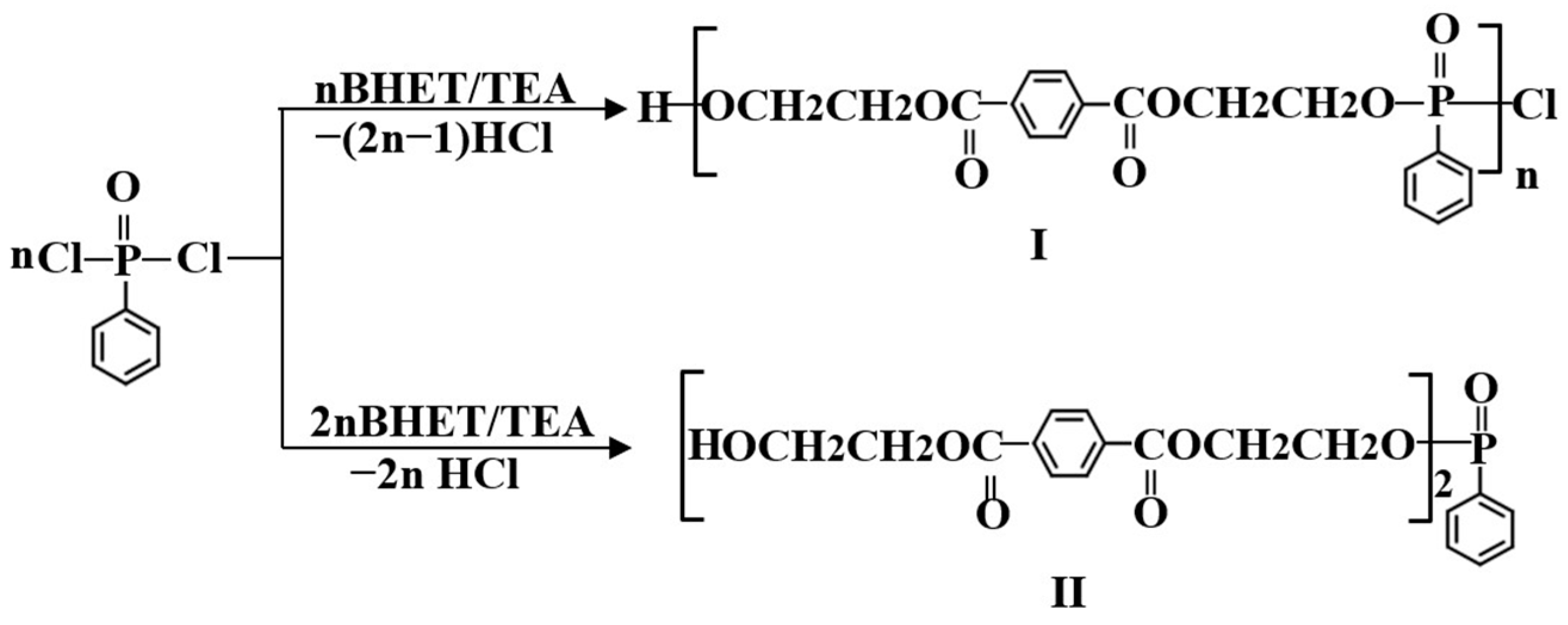

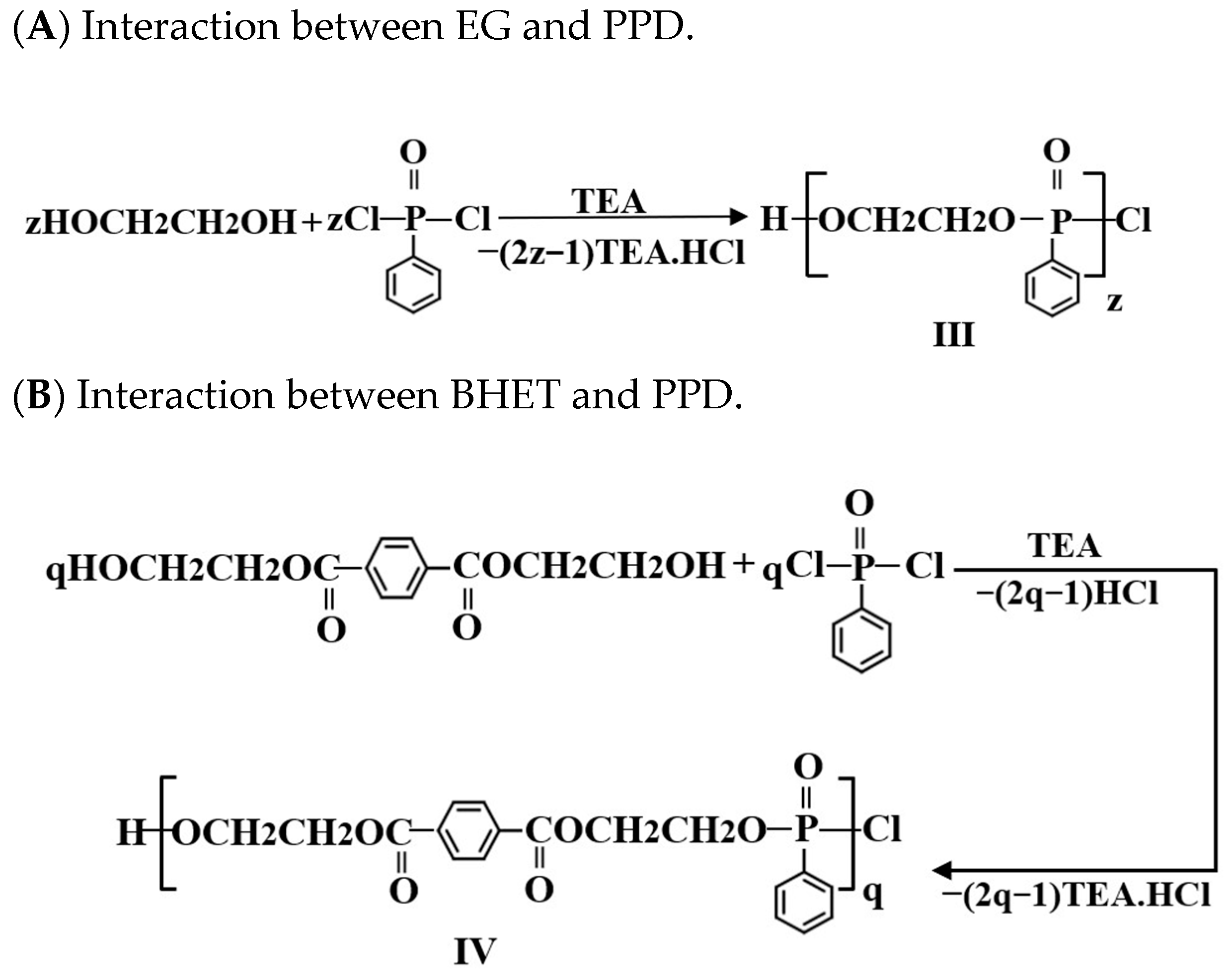
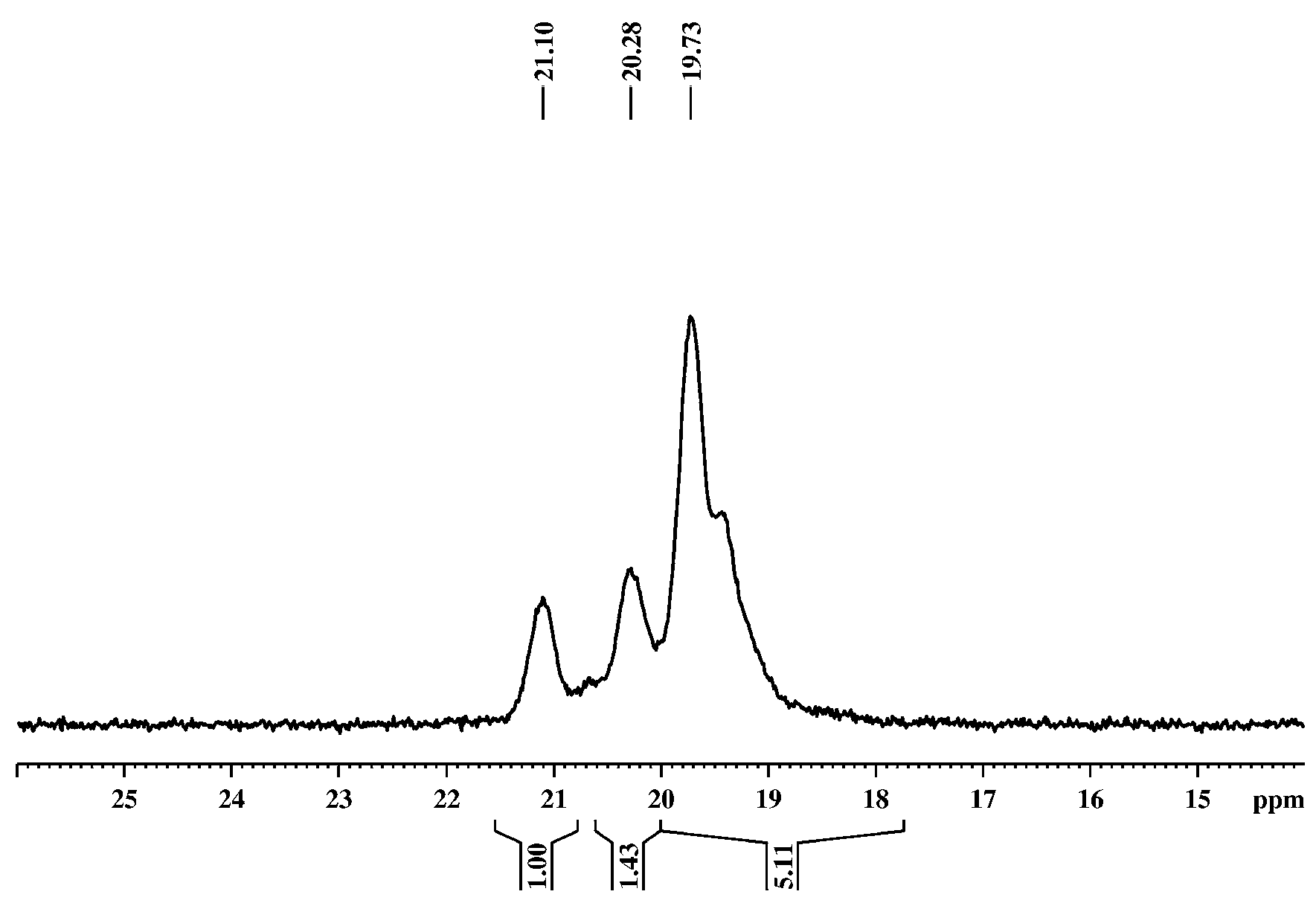
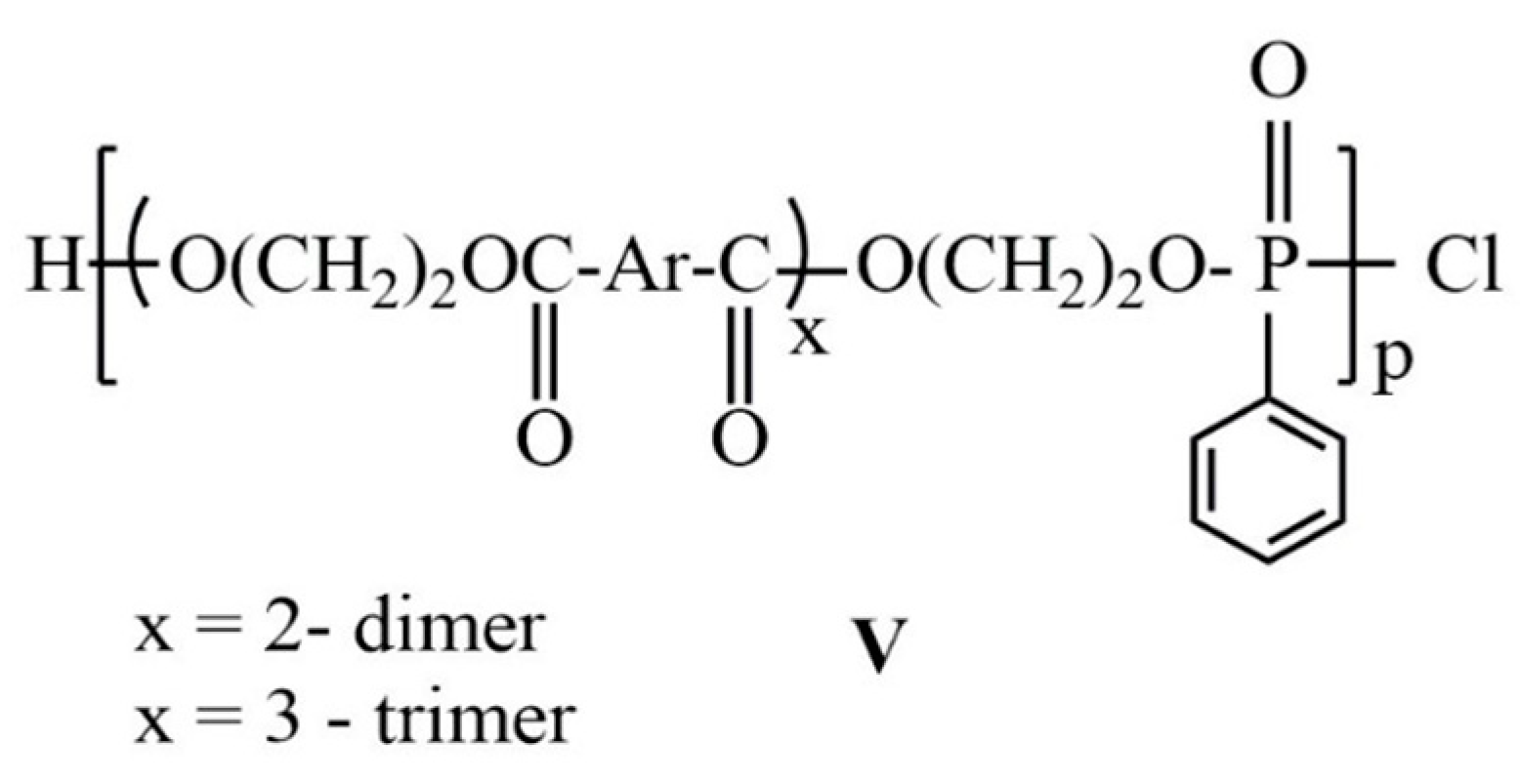
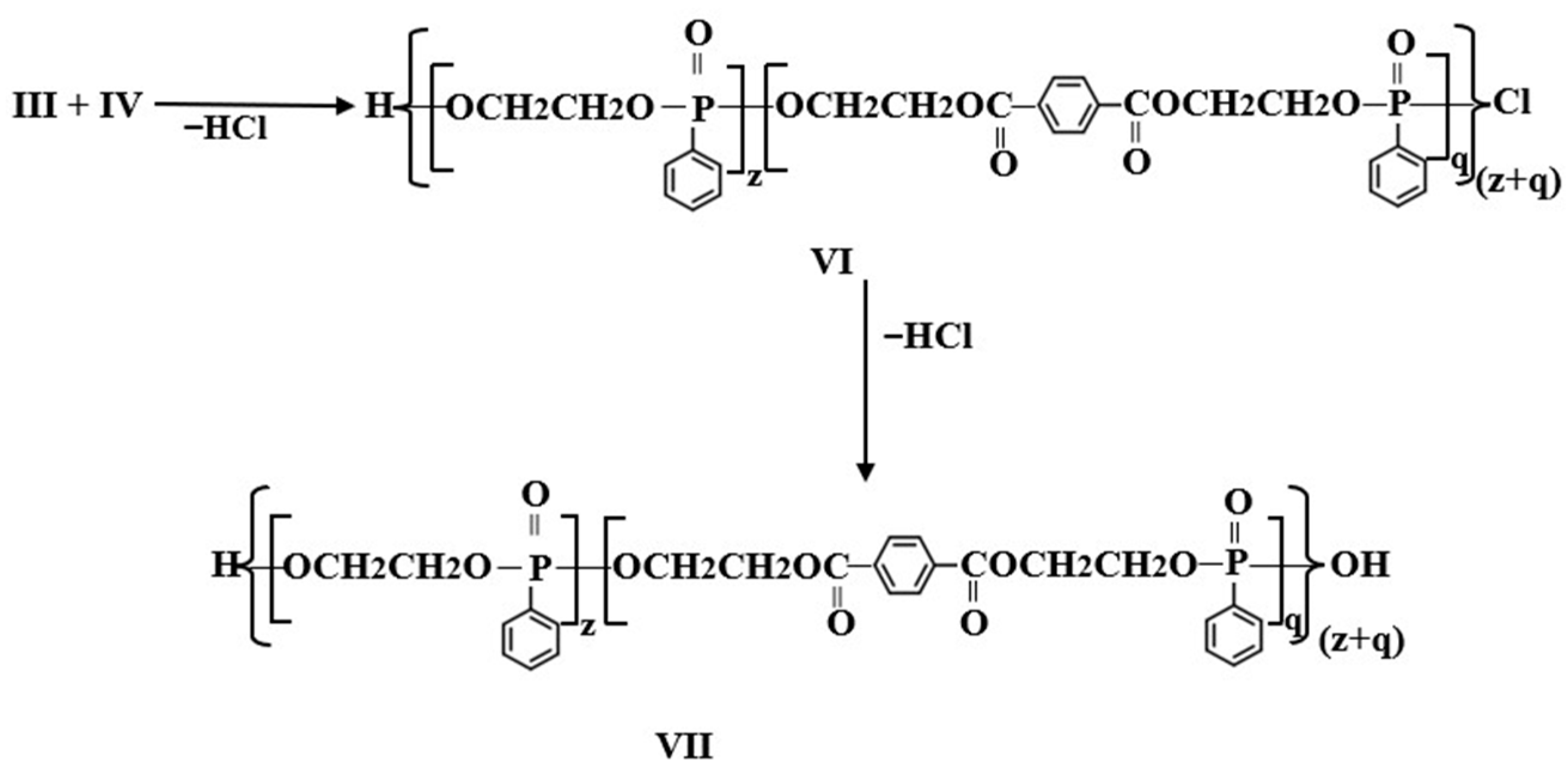
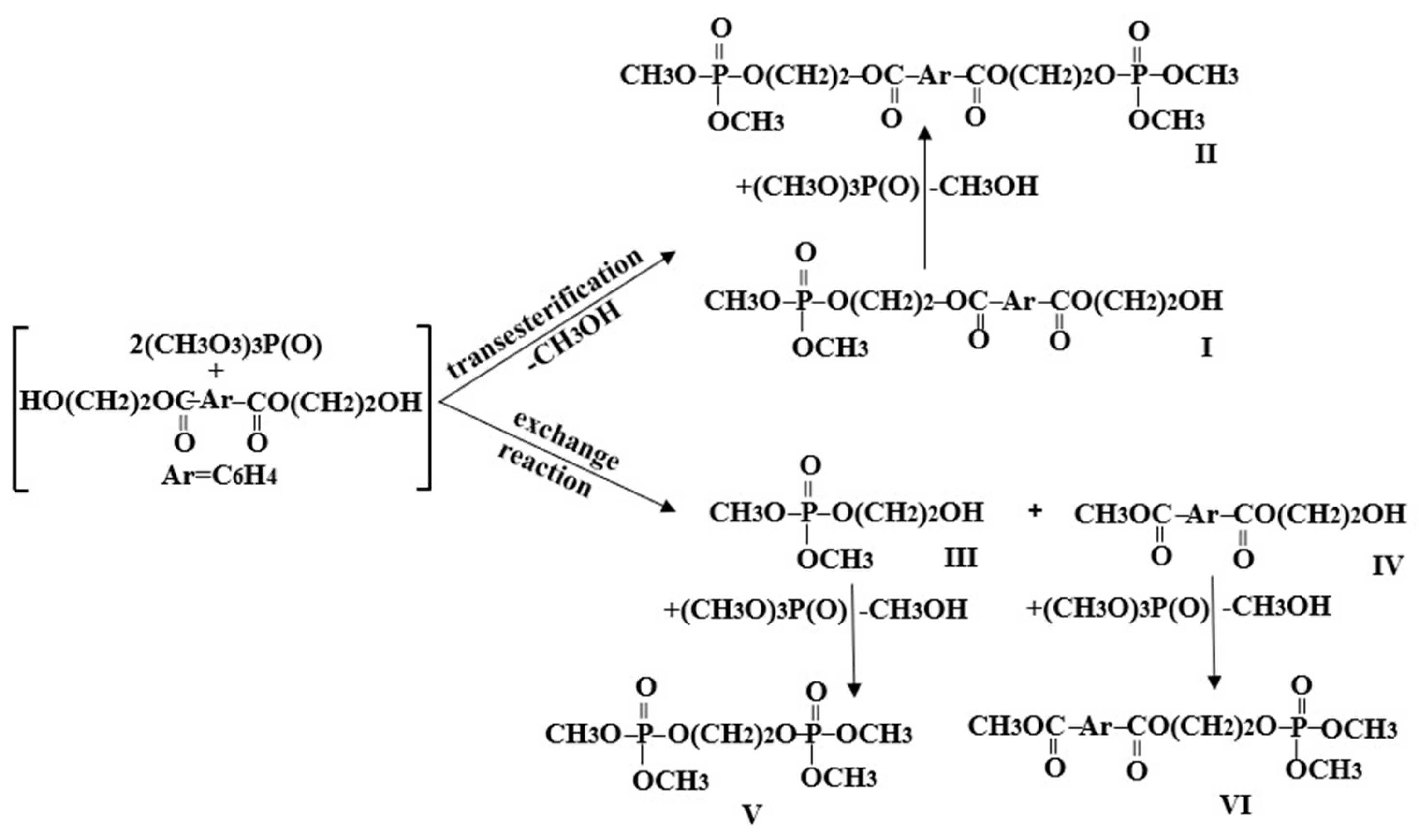
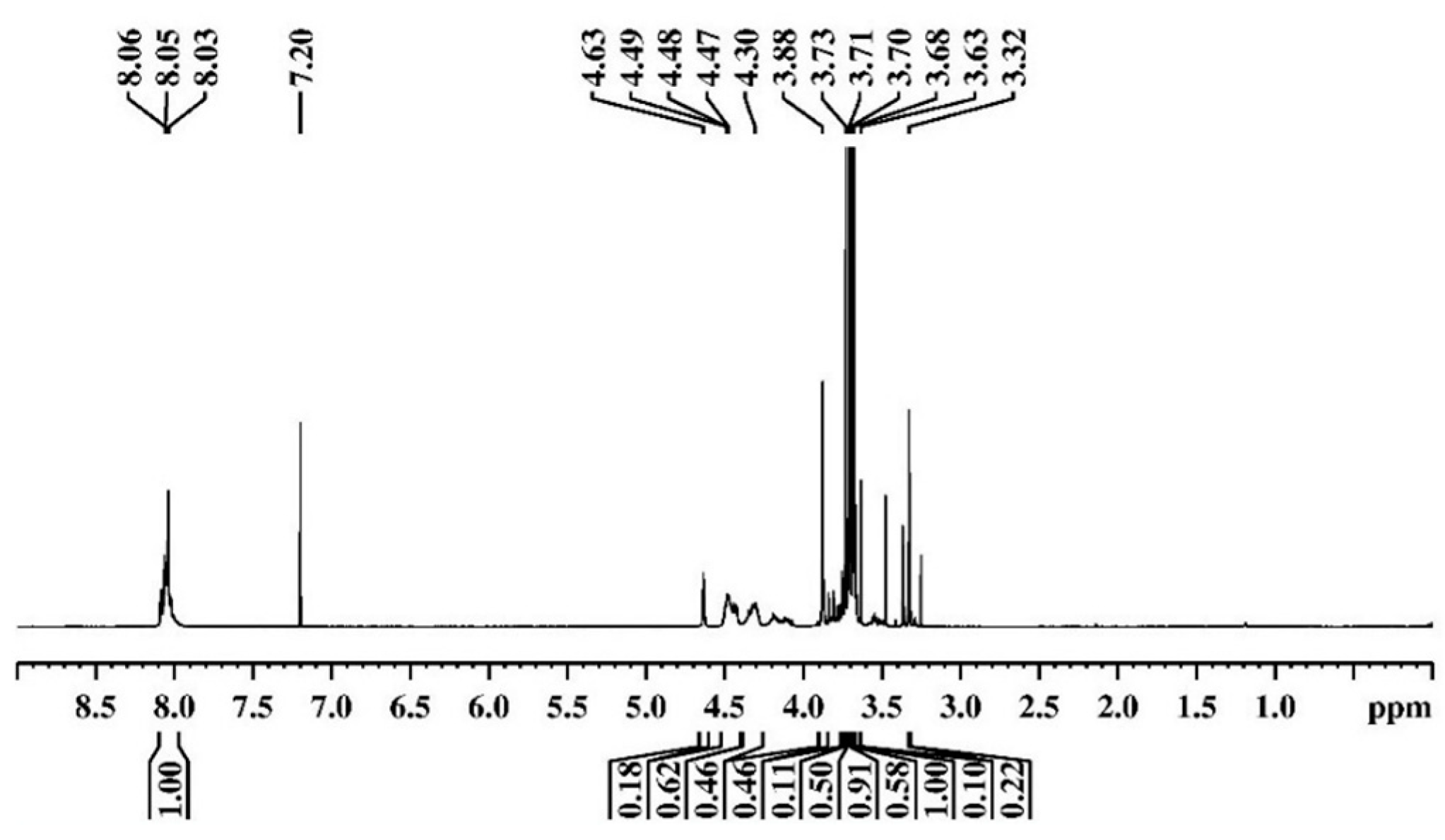


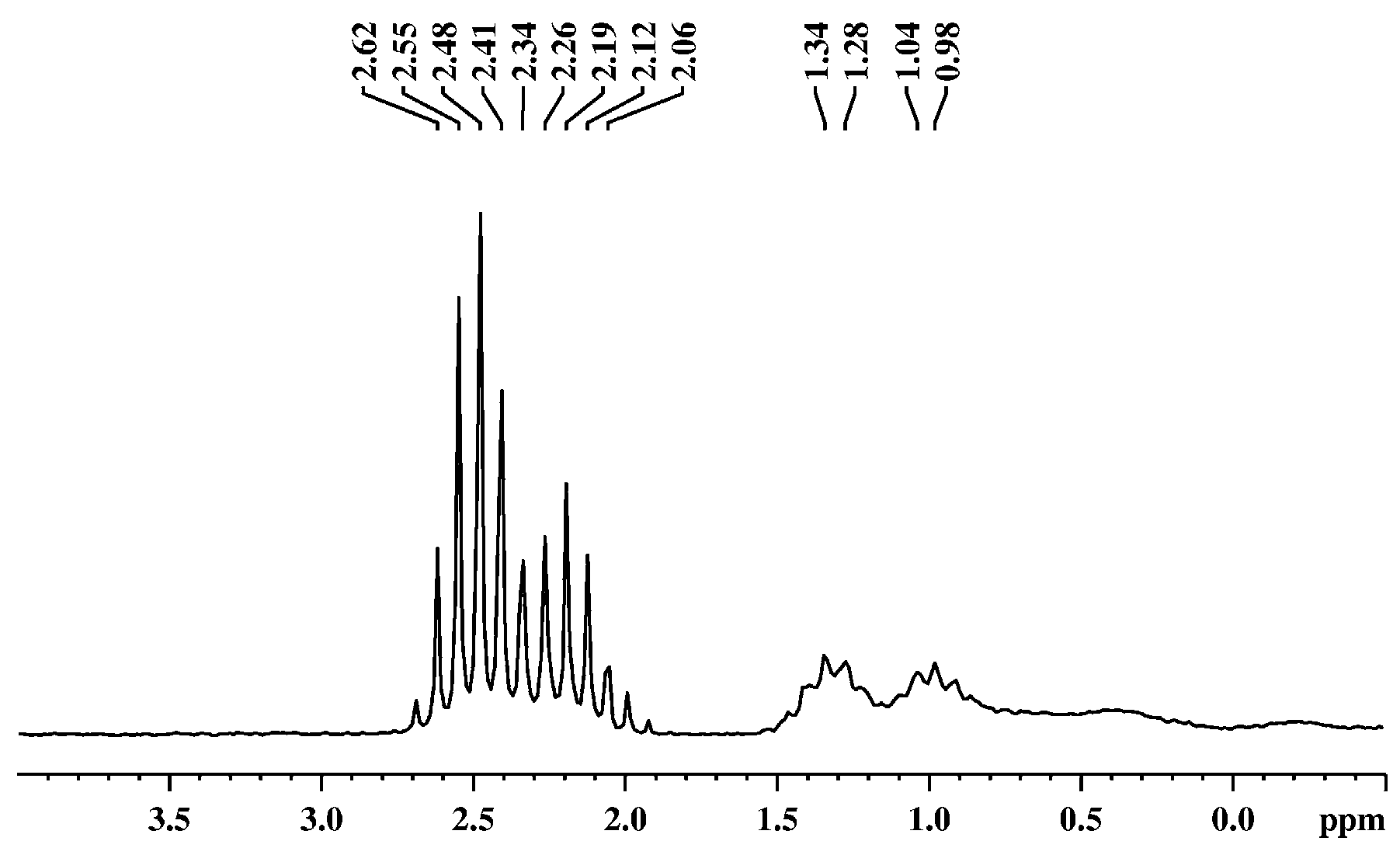

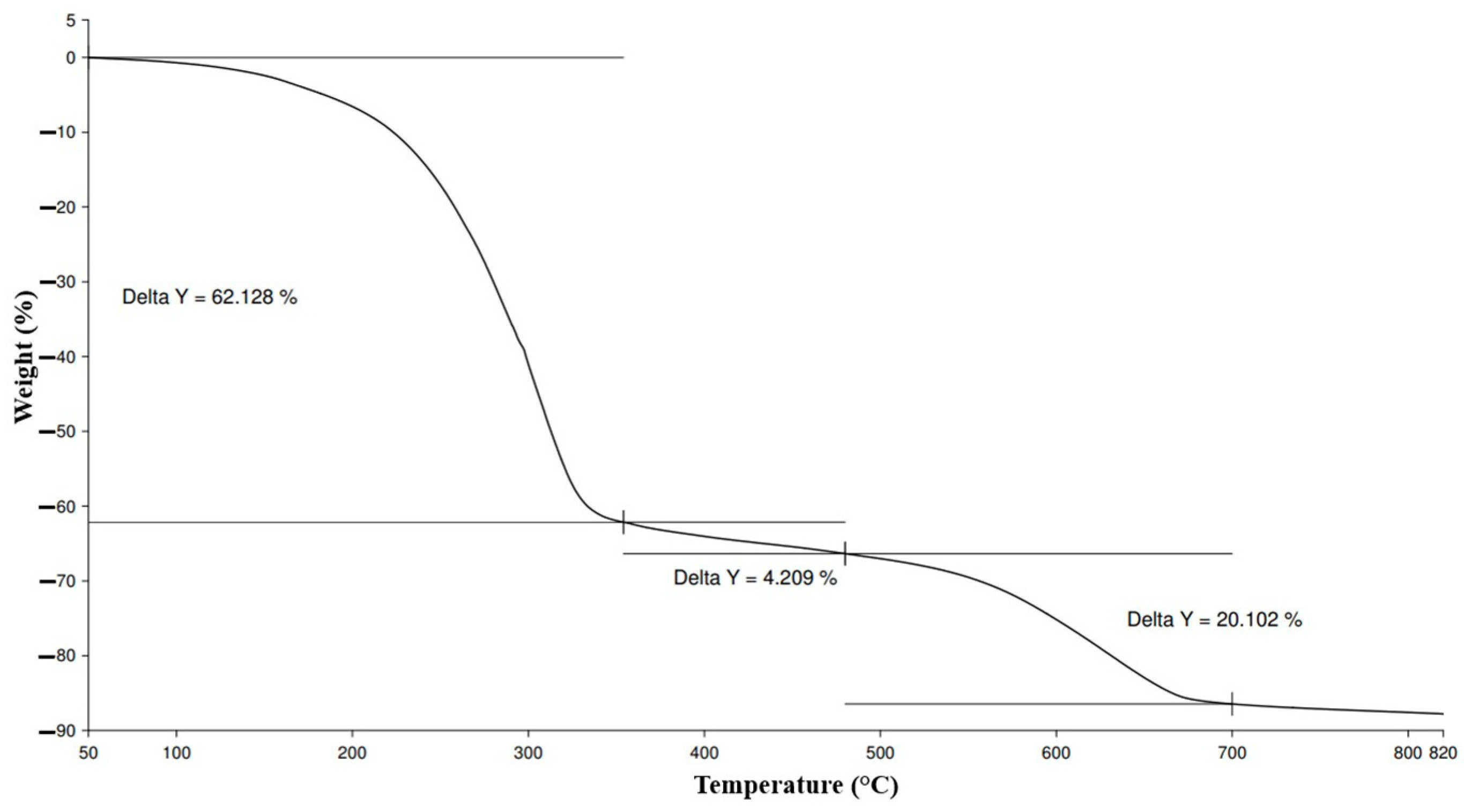
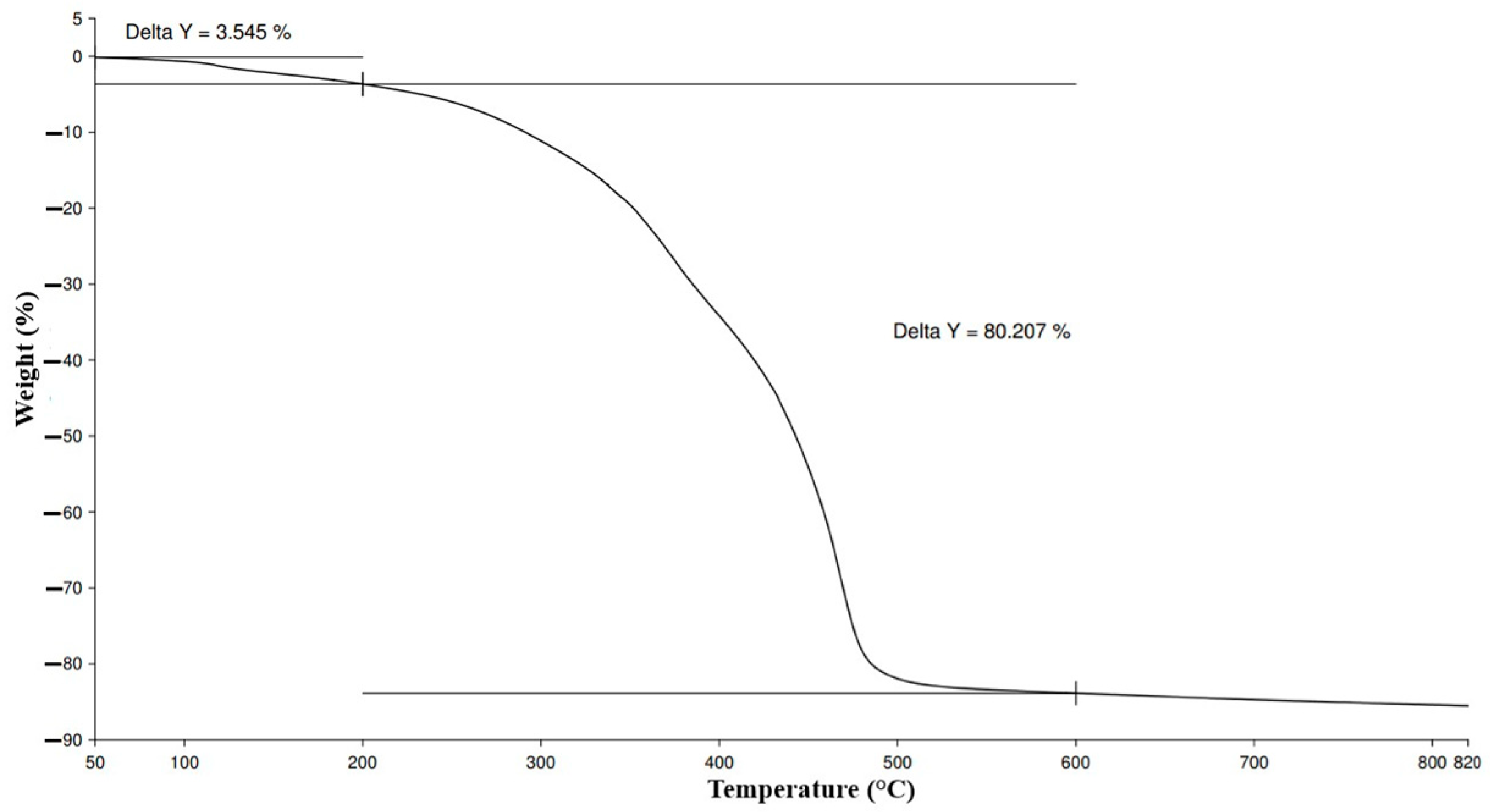
| Product | Mn | Mw | PDI |
|---|---|---|---|
| I | 295 | 297 | 1.005 |
| II | 428 | 433 | 1.011 |
| IV | 219 | 221 | 1.008 |
| VIa | 623 | 628 | 1.008 |
| VIb | 831 | 835 | 1.005 |
Disclaimer/Publisher’s Note: The statements, opinions and data contained in all publications are solely those of the individual author(s) and contributor(s) and not of MDPI and/or the editor(s). MDPI and/or the editor(s) disclaim responsibility for any injury to people or property resulting from any ideas, methods, instructions or products referred to in the content. |
© 2024 by the authors. Licensee MDPI, Basel, Switzerland. This article is an open access article distributed under the terms and conditions of the Creative Commons Attribution (CC BY) license (https://creativecommons.org/licenses/by/4.0/).
Share and Cite
Zahova, S.; Tuleshkov, P.; Troev, K.; Mitova, V. Value-Added Products Derived from Poly(ethylene terephthalate) Glycolysis. Molecules 2024, 29, 4261. https://doi.org/10.3390/molecules29174261
Zahova S, Tuleshkov P, Troev K, Mitova V. Value-Added Products Derived from Poly(ethylene terephthalate) Glycolysis. Molecules. 2024; 29(17):4261. https://doi.org/10.3390/molecules29174261
Chicago/Turabian StyleZahova, Simona, Pencho Tuleshkov, Kolio Troev, and Violeta Mitova. 2024. "Value-Added Products Derived from Poly(ethylene terephthalate) Glycolysis" Molecules 29, no. 17: 4261. https://doi.org/10.3390/molecules29174261
APA StyleZahova, S., Tuleshkov, P., Troev, K., & Mitova, V. (2024). Value-Added Products Derived from Poly(ethylene terephthalate) Glycolysis. Molecules, 29(17), 4261. https://doi.org/10.3390/molecules29174261








